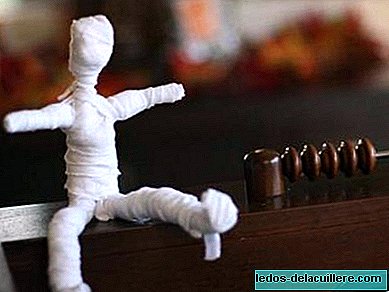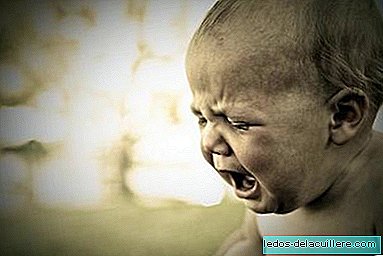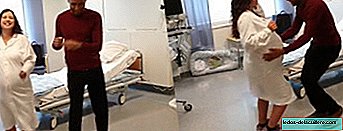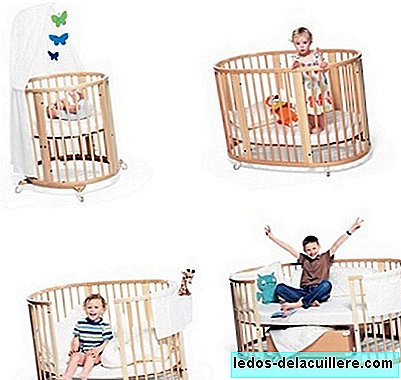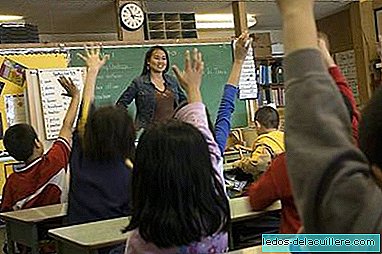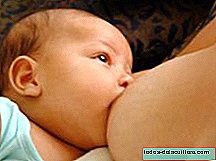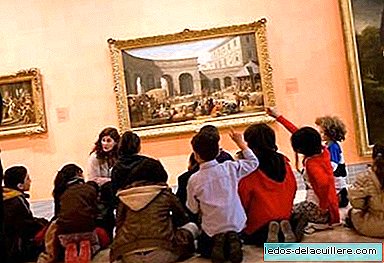The children have a innate instinct to learn new things, and doing it through the game, is not only fun for them but it also helps them to experience, observe and interact actively with the world around them.
Montessori learning fosters, among other things, the natural ability of children to learn through play, so today we propose seven Montessori activities to do with the children.
To learn the parts of a plant
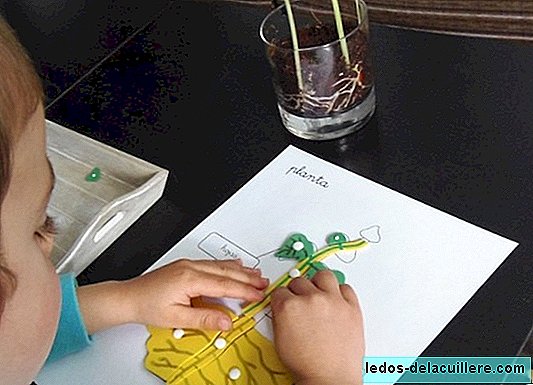 Photo via www.montessoriencasa.es
Photo via www.montessoriencasa.es The Montessori web at home offers us this fun activity, specially designed for children between three and six years old learn the basic parts of a plant.
The first thing to do is to put a few beans in a glass of crital so that children can see the germination process and how the plant will take root, stem and leaves. Once we have our plant ready, we will draw the basic structure of it on a sheet.
Then, with eva rubber of different colors we will draw and cut the different parts of the plant until creating a educational puzzle For our little one to learn playing.
To learn the parts of the human body
On the web Educational Images we have found this activity proposed by Montessori Mom and that is in line with the previous one, but this time oriented to learn the parts of the human body.
 Photo via www.imageneseducativas.com
Photo via www.imageneseducativas.com Draw the classic on a white sheet or paper human body profile silhouette (On the Internet you can also find sheets to print) and identify with your child the most important organs of the body.
Once identified, ask him to help you collect stones of similar sizes, flat and as white as possible. Select as many stones as organs you have identified, and proceed to draw with markers on each of the stones, the different organs of the human body. In this way, one stone will be the brain, another the right lung, another the left ...
Play with your child to place each stone in its corresponding place in the silhouette, thus learning the location of each of the body's organs.
Create some musical maracas
Make some musical maracas It is a classic activity that all children are passionate about and in which they will work, in addition, different textures depending on the materials used.
 Photo via www.creciendoconmusicblog.wordpress.com
Photo via www.creciendoconmusicblog.wordpress.com We really liked this idea of the blog Growing up with Music, which teaches us step by step how to perform some maracas using elements that we all have at home such as plastic bottles, rolls of toilet paper and insulating tape.
Before closing the maracas, remember to fill them with different ingredients such as rice, dry pasta (which your little one can also color with markers to make the interior more colorful), noodles, sand, colored clips or any other object / ingredient that you can think of and that when shaken it sounds. Depending on the ingredient chosen, the sound of the maraca will be different.
This activity is very complete and fun, and in the end you will get some fun sensory maracas that when shaken will emit different sounds and nuances the function of the content they claim.
Sensory box
Another classic activity, simple and recommended to appreciate the different textures through touch, is to create a sensory box.
 Photo via www.crdionisiaplaza.es
Photo via www.crdionisiaplaza.es On the Dionisia Plaza website they give us the idea of making sensory cards in which we paste different materials so that children can touch them, manipulate them and appreciate the variations that exist through touch.
We can use any resource we have available, such as sponges, cotton, different types of fabric (silk, sheepskin, plasticized ...), different types of paper (patent leather, pinocchio, tissue paper, cardboard, sandpaper ...) , plastic ... or any other everyday object whose touch may arouse the child's interest.
We can also change the cards for the silhouette of the footprint of our little one, and do the activity with bare feet instead of with the hands.
Learn colors
From Pequefelicidad we propose a Montessori activity to learn colors experientially. What comes out of the mixture of red and blue? With this simple experiment you will find out by playing.
 Photo via www.pequefelicidad.com
Photo via www.pequefelicidad.com You must fill three transparent glass jars with water and use food coloring to dye water with the three primary colors: red, yellow and blue. It will be enough with a droplet of dye so that the water is dyed at the moment.
Place three empty glass jars next to them and a plasticized folio showing the possible combination of colors and serve as a guide when mixing them with each other: red and yellow result in orange; red and blue result in purple; and from the mixture of blue and yellow you will get green.
With the help of a pipette, let Your child experiences what happens when he mixes the colors with each other.
Object transfer and classification
From the Creative Education website, its author proposes ideas to transfer and classify different objects based on common characteristics.
 Photo via www.mieducacioncreativa.com
Photo via www.mieducacioncreativa.com With this sensory activity, children will practice Fine motor skills, coordination and classification of objects depending on its size, shape, color or other common characteristics.
We propose this simple exercise that consists of classifying colored pom poms. All the pom poms will be together in a bowl and with the help of some tweezers, the child will go separating them by colors and placing them in different bowls.
You can do this activity with any other object you can think of as well as use different tools for transfer, such as ice tongs, pipettes, spoons ... In the original post you will find a lot of ideas.
Decorate stones with mandalas
The Growing with Montessori website offers us this colorful and relaxing activity to do with children and that, in addition, will bring a creative, original and decorative touch to our home.
 Photo via www.creciendoconmontessori.com
Photo via www.creciendoconmontessori.com It consists of decorating stones with mandala drawings, an exercise that favors the concentration, relaxation, fine motor skills and imagination. Ideal for young and old!
Ask your child to help you collect a good handful of flat, rounded, white and medium-sized stones. On any excursion to the countryside, the beach or mountain you can find them, although if you prefer, you can also use the boulders or pebbles that are sold in garden stores.
Buy an assortment of children's tempera colors with e applicator Go developing your own design as your imagination and creativity tells you. The result will be, really amazing.
In Babies and More The Montessori learning method becomes fashionable thanks to Prince George. What is it and how do I know if it suits my son? How to explain to children the passage of time using a Montessori-inspired calendar


